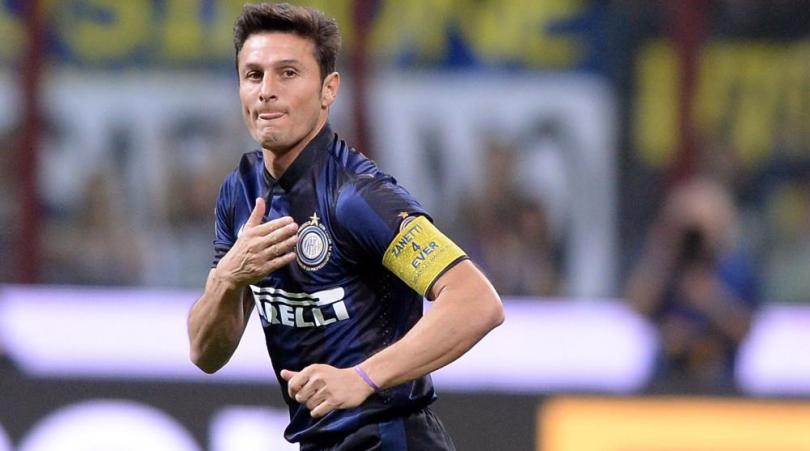Defensive strength Brazil's trump card as World Cup looms
Michael Cox on why it's not necessarily the Seleção's attacking flair that could take the glory
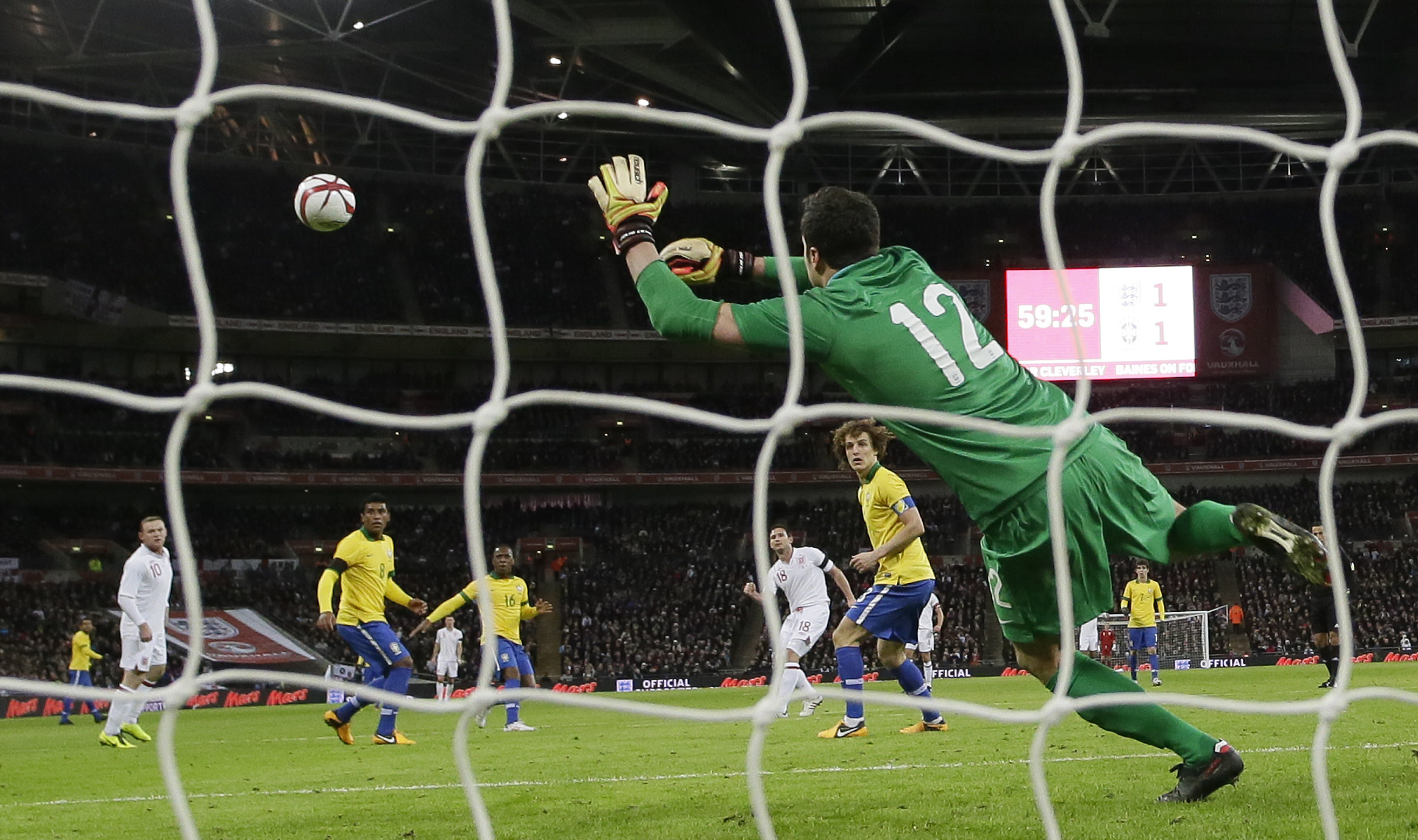
Like many football stereotypes, the cliché about the Brazilian national side and their love of outrageous, free-flowing 'samba football' is far from realistic. Though frequently possessing a couple of gifted, skilful attackers, Brazil are often very structured, disciplined and tactically cautious.
Brazil's most recent World Cup-winning side, the triumphant team of 2002, was most famous for the three Rs - Ronaldo, Rivaldo and Ronaldinho. But deeper in the side Brazil used three centre-backs in tandem with two holding midfielders, none of whom were technically remarkable footballers. Although Brazil's formation regularly changes, that's the usual theme - a solid backbone to the side gives the attackers freedom to roam.
If the stereotype about attacking football is usually unfair, it's currently woefully inaccurate. Brazil have a variety of decent attacking options, yet arguably no genuine world-class talents.
Ronaldinho and Kaka are past their best, while the likes of Oscar, Lucas Moura, Bernard and Neymar are 21 or under, and yet to come into their prime. The more experienced stars - Jadson, Hernanes and Hulk - feel like players who should be supporting global superstars, rather than being the key men themselves.
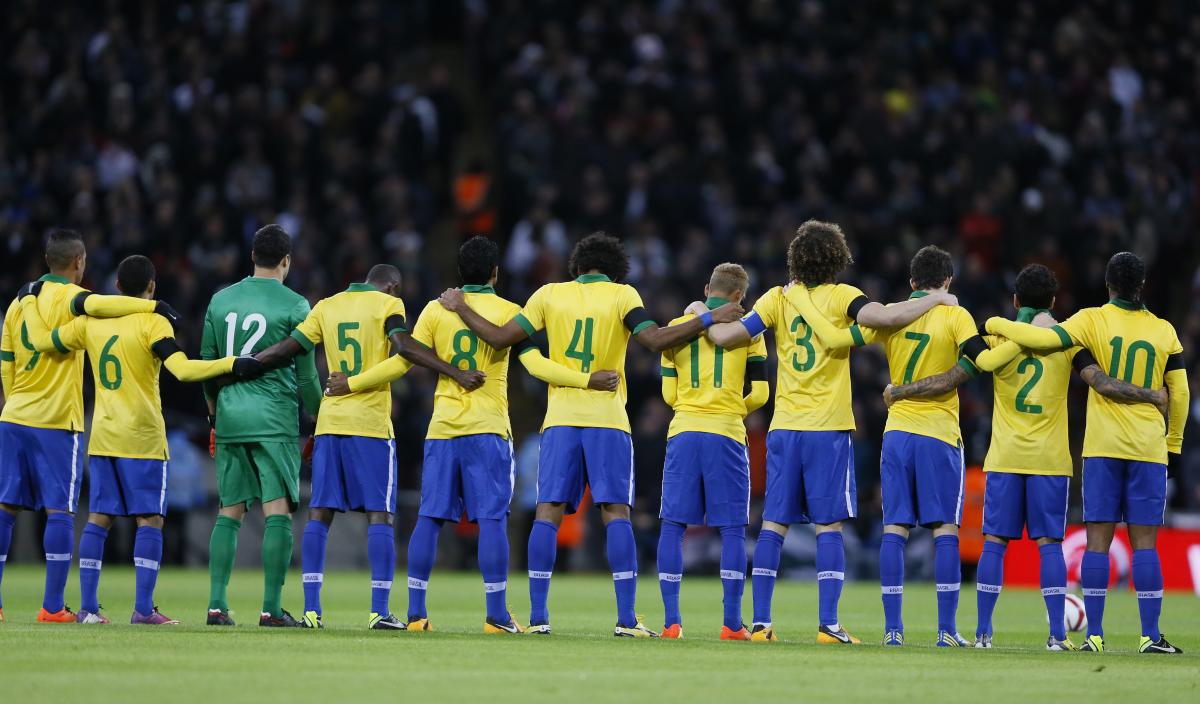
At the back, however, Brazil haven't been so strong for decades. Not only do they possess some outstanding individuals and arguably the world's best centre-back - they also have cohesion and strength in depth. If Brazil are to triumph in their home World Cup next summer, it will probably be because of their back four, rather than their attacking quartet.
Brazil are one of the few international sides that still take shirt numbers seriously, continuing the tradition of their back four being numbered 2, 3, 4, 6 from right to left. On the right, Luiz Felipe Scolari is able to call upon Barcelona's Daniel Alves, who may have turned 30 earlier this month, but still offers tremendous pace and energy up and down the right flank.
The stamina of Brazil's right-back has been a key feature of the side in recent years, and influences the way Brazil play higher up the pitch. It's been extremely rare for Brazil to use a proper right-winger or a right-sided forward, instead preferring to use a playmaker who drifts inside, like Oscar, or a shuttler who covers the centre of the pitch, like Ramires.
Get FourFourTwo Newsletter
The best features, fun and footballing quizzes, straight to your inbox every week.
Alves' attacking instincts are obvious, and he'll push up the line aggressively to receive the ball in advanced positions. His crossing isn't the strongest feature of his game, but it's good enough to be a reliable source of assists at club level, as he showed recently against Betis.
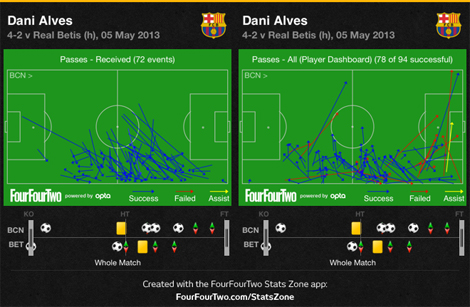
After Brazil messed around with inappropriate captains for a while - Robinho wearing the armband was a particular low point - Scolari's skipper is now Thiago Silva, the commanding PSG defender. Few other defenders in world football are such all-rounders, and it's difficult to find an obvious weakness in Silva's game.
He's dominant in the air against traditional centre-forwards, but also intelligent with his positioning against tricky attackers, boasting good anticipation skills to get in front of his man and intercept the ball - he demonstrated both features of his game in the recent Ligue 1 win over Evian.
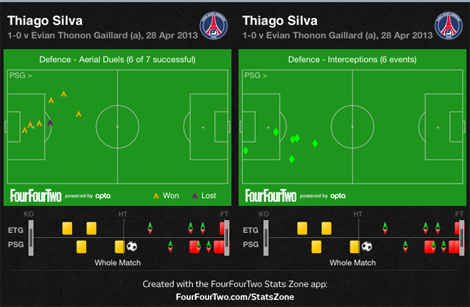
The left side of Brazil's defence is slightly weaker, but David Luiz has grown into a consistent, reliable centre-back - and prefers playing to the left side of a defensive pairing. Traditionally more impressive alongside a strong centre-back, having become accustomed to partnering Luisao for Benfica, Luiz impresses more with his technical skills.
He's not the fiercest competitor in the air, winning only 56% of his aerial duels this season - a poor rate for a centre-back, but his distribution is always positive. With Brazil unlikely to field a proper deep-lying playmaker in midfield, Luiz's passing ability is vital.
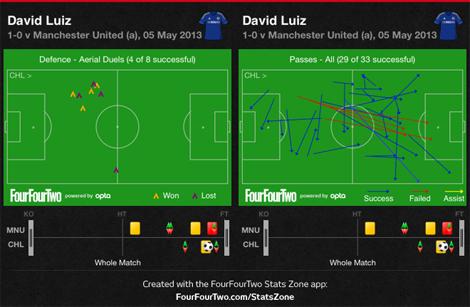
At left-back, Brazil use Real Madrid's Marcelo. He's taken a while to establish himself in the national side - he made his debut nearly seven years ago, yet has only picked up 18 caps since. Other players frequently used at left-back, such as Michel Bastos and Andre Santos, are now barely in the picture.
Whereas on the right, Alves always overlaps and stretches the play, Brazil often use an outside-left ahead of Marcelo. His positioning is different - he's used in a deeper role, and when he does motor forward, he often charges towards goal. His record of four goals in 18 internationals is impressive for a left-back, and when given space ahead of him, he's always a goal threat.
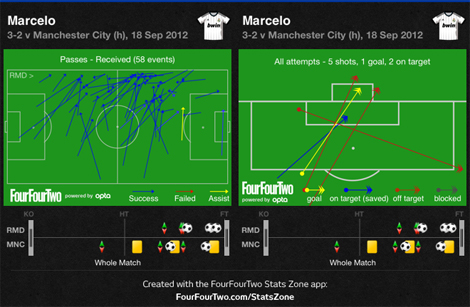
With Scolari able to call upon an impressive goalkeeper in Julio Cesar, the defensive base of his Brazil side is much more impressive than when he won this competition in 2002 - back then, he was forced to depend upon Roque Junior as one of his centre-backs.
Scolari has quality in his back four, and he should be able to field this unit consistently over the next twelve months. Now, attention turns to getting the balance right in attacking positions.
Stats Zone is bigger and better than ever! OurFREEOpta-powered app nowfeatures the Premier League, La Liga, Bundesliga, Ligue 1, Serie A, Champions League and Europa League.
Download Stats Zone
